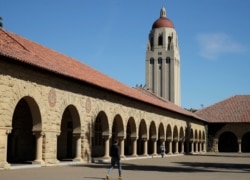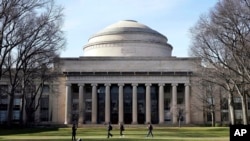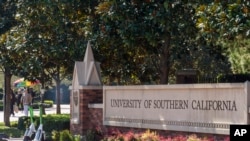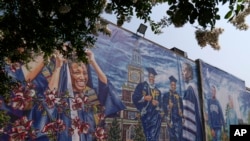Student Union
Screen College Students for COVID Every 2 Days, Researchers Advise
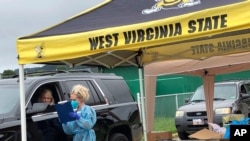
U.S.-based colleges and universities continue to struggle with how they will receive students while containing the spread of COVID-19.
Nearly 40% of schools say they will bring students back to campus, according to the Chronicle of Higher Education, which has compiled a database of college and university responses to COVID since the spring.
Even at schools where classes are 100% online, many students are living off-campus and taking online courses rather than remaining at home with their parents.
Researchers say schools would have to test their students every two days for COVID-19 to ensure their health and safety, and screening after symptoms emerge won’t control the spread, according to a study published July 31.
“We believe that there is a safe way for students to return to college in fall 2020,” the study authors wrote in JAMA Network, the publishing site of the Journal of the American Medical Association, on July 31.
“Screening every two days using a rapid, inexpensive, and even poorly sensitive test, coupled with strict interventions ... was estimated to yield a modest number of containable infections and to be cost-effective,” the authors wrote.
Another study by Cornell University in upstate New York suggested if students were tested every five days, that population would be safer in their campus bubble than the online student population, which would freely circulate where they reside.
But not every school is equipped to conduct COVID-19 testing at that pace because of staffing and cost.
At Mercer University in Macon, Georgia, the school community “must unilaterally share the responsibility of taking the necessary steps to minimize the risk of COVID-19 infections throughout our campuses.” Students will take a survey, and “may be required to be tested for the SARS-CoV-2 infection (COVID-19), depending on their survey responses. Regardless of survey results, any student may request and be tested for COVID-19.”
“Symptom-based screening alone was not sufficient to contain an outbreak,” the study authors wrote.
COVID-19 “can be transmitted by highly infectious but asymptomatic ‘silent spreaders,’” lead study author A. David Paltiel, Ph.D., of the Yale School of Public Health, described to VOA.
“It simply isn’t possible to move swiftly enough to contain an outbreak using nothing more than symptom-based monitoring. You can’t play catch-up with this virus,” Paltiel wrote.
“A school that tests and responds only when symptoms have been observed is like a fire department that responds only to calls when the house is already known to have burnt to the ground.”
At the State University of New York (SUNY) system, students are required to produce negative test results that were taken within 14 days before their arrival back to campus. The university asks them to quarantine between the test and receiving results, according to SUNY’s website.
“If you have symptoms consistent with COVID-19 or a temperature that is over 100 degrees Fahrenheit or 38 degrees Celsius, you will be directed to contact Student Health Services for an evaluation and a determination if you need to have a COVID-19 PCR test,” said the letter to students sent by Rick Gatteau, Stony Brook’s vice president for student affairs.
This, again, may be insufficient, the researchers said.
“Many schools are considering the option of carefully monitoring students for the symptoms of COVID-19 and using signs of illness to trigger isolation, contact tracing, and quarantine. We explored thousands of scenarios and failed to find even one plausible circumstance under which this strategy would be sufficient to contain an outbreak,” he wrote VOA.
“This sets a very high bar — logistically, financially, and behaviorally — that may be beyond the reach of many university administrators and the students in their care.”
At private universities like Stanford University in California, which has a $27.7 billion endowment, students will be tested for free.
“Each student will be tested twice: Once on approximately days 0-2 upon arrival, and then again on days 5-7 of their residence within Stanford housing. The tests will come at no cost to students,” according to the university’s COVID-19 FAQ’s page.
At Columbia University in New York City, all students, faculty and staff returning to campus will be required to take a COVID-19 test, they stated on their website.
“Students who test positive through the university testing program will be referred for contact tracing and will be required to isolate in designated on-campus rooms or in their off-campus residences until released by Yale Health,” Yale University stated on its webpage. “Medical monitoring and advice will be provided by Yale Health during isolation.”
Other educators say it is a struggle to manage social behaviors among young college students that might thwart their efforts.
University of Connecticut Professor Sherry Pagoto in the allied health sciences department, with graduate student Laurie Groshon, conducted student focus groups about returning to campus.
College students return to campus in a few weeks. We wanted to know their thoughts about quarantine, symptom tracking, contact tracing, and mask wearing on campus, so my grad student @laurie_groshon and I did focus groups to find out.
— Sherry Pagoto (@DrSherryPagoto) July 11, 2020
Here’s what students told us
1/x
“Every student we asked said that this is not realistic and will likely fail,” Pagoto tweeted.
“They pointed out that students are eager to see each other and will find a way to do so when they arrive on campus. They said that students who live one to two hours away will try to find a way to go home,” she tweeted. “They said off campus students will likely find their way on campus.”
Dr. Ravina Kullar, an infectious disease expert, backed up the students’ feedback.
“Preventing infection requires everyone to abide by strict infection control measures, including mask-wearing, hand hygiene, and social distancing on campus,” Kullar told VOA.
Colleges have a responsibility to supply students with adequate screening, masks and hand hygiene supplies, Kullar said, but success lies in the hands of the students and staff in abiding by strict COVID-guidance and not having mass social gatherings.
So many opportunities for exposure, and absolutely no routine testing. I'm worried.
— Dr. Theresa Chapple (@Theresa_Chapple) July 31, 2020
>
See all News Updates of the Day
Malaysian official: Schools can’t turn away from global tensions

Zambry Abdul Kadir, Malaysia’s higher education minister, said protests spreading across universities in the United States show that schools can’t ignore political tensions.
Helen Packer, reporting in Times Higher Education, said the minister reminded educators that universities are key in the development of leaders, individuals and societies. (April 2024)
Social media breaks are difficult, but necessary

Between online classes, maintaining social connections and working on projects, college students can have a hard time disengaging from the demands of technology.
In Florida International University’s PantherNOW, Ariana Rodriguez offers strategies for taking a break from social media. (April 2024)
- By Melos Ambaye
Many master's degrees aren't worth the investment, research shows

Nearly half of master's degrees have a negative financial return, according to new research by the Foundation for Research on Equal Opportunity, an economic research organization.
The study indicates that many graduate degree programs do not increase lifetime earnings enough to be worth it.
While 23% of bachelor’s degree programs yield a negative financial return on investment, 43% of two-year degrees and master’s degrees fail to deliver a return, according to the study by Preston Cooper, a senior fellow at FREOPP.
Cooper assessed the return on investment for 53,000 degree and certificate programs to determine whether a student’s lifetime earnings outweigh program costs and the risk of not completing their degree.
His findings show that a student’s field of study was the overriding indicator of return on investment at the undergraduate and graduate level.
Engineering, computer science and nursing bachelor’s degrees have high financial returns on investment, while programs in education, fine arts, psychology and English usually have low returns.
Graduate degrees in medicine and law tend to have strong payoffs. But a large share of master’s programs, including the MBA, frequently have low payoffs, according to Cooper.
Although workers with master’s degrees earn 16% more than those with only bachelor’s degrees, Cooper says the figure fails to account for students who had “higher preexisting earnings potential.”
“MBA students typically have high preexisting earnings potential, having often chosen high-ROI undergraduate majors such as finance and economics,” Cooper writes. “So the MBA adds little value on top of that.”
The study indicates that high starting salaries are predictors of high returns on investment. Degrees with starting salaries of $57,000 a year or more deliver the best lifetime returns.
But the return on investment of a degree can vary depending on the educational institution.
“Students interested in fields with low average pay can still find some schools that do well transforming those fields of study into high-paying careers,” Cooper writes.
The quality of an institution also matters, said William Tierney, professor emeritus of higher education at the University of Southern California.
“An MBA from Harvard is a likely ticket to a good job,” Tierney told VOA. “An MBA from the University of Phoenix, less so.”
But students pursue graduate programs for more than just financial reasons.
“Some degrees open up careers in fields that students may enjoy, such as in the performing arts,” Robert Kelchen, head of educational leadership at the University of Tennessee, Knoxville, told VOA.
“Others can help gain access to social networks or simply help students learn about a topic that is of interest,” Kelchen added.
Cooper told VOA that it might make sense for students in degree programs with low returns on investment to switch majors if they can still graduate on time.
He found the worst outcome for a student’s return on investment is dropping out of college “because they must pay for one or more years’ tuition and spend time out of the labor force.”
Lawmakers who fund higher education have a responsibility in ensuring “higher education delivers on its promise of economic mobility,” Cooper said.
Nearly a third of federal funding, including Pell grants and student loans, pays for higher education programs that fail to provide students with a return on investment, according to the study.
Cooper’s view is that “some schools should shut down low-ROI programs and reallocate institutional resources to programs with a better return.”
“There's definitely this narrative out there that higher education is always worth it, and you should always try to get that extra degree because it will increase your earnings,” he told VOA. “That's reinforced by colleges who make lofty promises regarding their graduate degree programs' outcomes, which all too often fall short.”
Harvard students end protest as school agrees to discuss Gaza conflict

Protesters against the war between Israel and Hamas were voluntarily taking down their tents in Harvard Yard on Tuesday after university officials agreed to discuss their questions about the endowment, bringing a peaceful end to the kinds of demonstrations that were broken up by police on other campuses.
The student protest group Harvard Out of Occupied Palestine said in a statement that the encampment "outlasted its utility with respect to our demands." Meanwhile, Harvard University interim President Alan Garber agreed to pursue a meeting between protesters and university officials regarding the students' questions.
Students at many college campuses this spring set up similar encampments, calling for their schools to cut ties with Israel and businesses that support it.
The Israel-Hamas war began when Hamas and other militants stormed into southern Israel on October 7, killing some 1,200 people and taking 250 hostages. Palestinian militants still hold about 100 captives, and Israel's military has killed more than 35,000 people in Gaza, according to Gaza's Health Ministry, which doesn't distinguish between civilians and combatants.
Harvard said its president and the dean of the Faculty of Arts and Sciences, Hopi Hoekstra, will meet with the protesters to discuss the conflict in the Middle East.
The protesters said they worked out an agreement to meet with university officials, including the Harvard Management Company, which oversees the world's largest academic endowment, valued at about $50 billion.
The protesters' statement said the students will set an agenda that includes discussions on disclosure, divestment, reinvestment and the creation of a Center for Palestine Studies. The students also said that Harvard has offered to retract suspensions of more than 20 students and student workers and back down on disciplinary measures faced by 60 more.
"Since its establishment three weeks ago, the encampment has both broadened and deepened Palestine solidarity organizing on campus," a spokesperson for the protesters said. "It has moved the needle on disclosure and divestment at Harvard."
Chinese students report interrogations, deportations at US airports
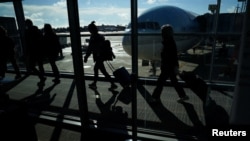
Academics from China are reporting increased scrutiny at U.S. airports, with valid visa holders being interrogated and turned away by Customs and Border Protection Agents.
Phones and laptops have been searched, and researchers have undergone extensive questioning about their work. One graduate student at Yale, who was midway through her PhD, was turned back at Dulles airport and banned from entering the U.S. for five years, according to The Guardian.





